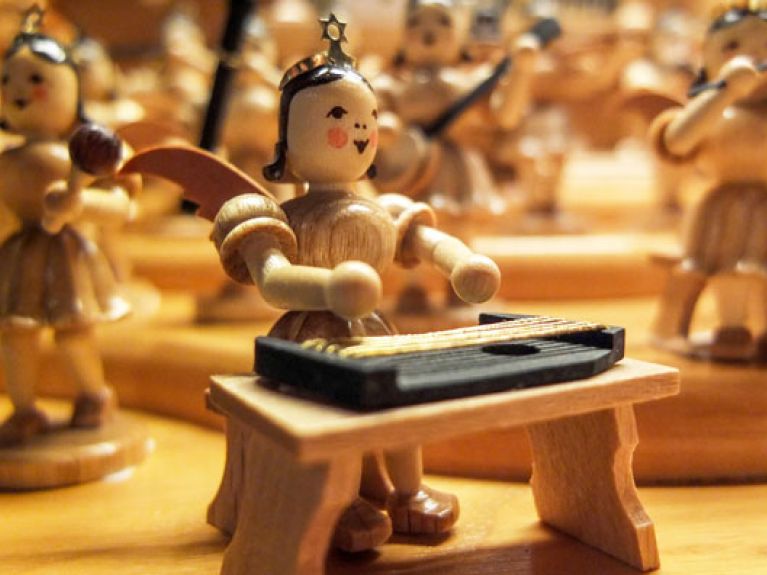Entdecke DE: Christmas fare from the Erzgebirge
The ‘Entdecke DE’ series takes you on a tour through Germany – this time to the Erzgebirge (Ore Mountains), home of the world-famous Christmas decorations.

Christmas pyramids
The often multi-storey Christmas pyramids are handmade in the many workshops in and around Seiffen in Saxony, also known as “toy village”. The rising heat from the candles drives the pyramid’s fan wheel (or impeller), which then begins to rotate. Lathe-work figures and animals re-enact Christian and secular scenes, often telling whole stories. The biggest Christmas pyramid in the world is 14.65 metres high and adorns Dresden’s famous Striezelmarkt, one of Germany’s oldest Christmas markets.
Nutcrackers
Open its mouth, pop in the nut – and crack! The nutcracker doesn’t seem to enjoy it, though; he always has a frown on his face. Why? The first Erzgebirge nutcrackers were made around 1870, at a time when kings, soldiers and generals made life hard for the people. The people of the Erzgebirge got their own back in their own way: by immortalizing the authorities with wooden figures, painting them with fanciful uniforms and weapons – and putting them to work cracking hard nuts.
Angels and miners
The Erzgebirge region was a centre of the mining industry in Central Europe for centuries, so the miner was first seen as a Christmas motif as early as the 15th century. The miner figure proudly holds one or two candles pride in his hands – light he would rarely see underground. He is accompanied by the angel who also holds the light in its hand, offering love and warmth. The laboriously hand-carved and turned figures are probably the most important symbols of Erzgebirge woodcraft – and famous far beyond Germany’s borders.
Incense smokers
From their mouths rises the smoke of an aromatic candle, spreading the unmistakable fragrance of Christmas. The fat-bellied incense smokers are lathe-turned from local hardwoods such as birch, beech, linden or alder and then hand-painted. The first incense smokers were made around 1830.
www.spielzeugmuseum-seiffen.de
www.nussknackermuseum-neuhausen.de

